The emergence of the Smart Battery System (SBS) greatly simplifies the design of stand-alone battery systems, so its application has surpassed the notebook computer field and appeared in a variety of other applications, such as backup power systems, high-reliability military and aerospace applications. Other key applications include automotive, security/surveillance/anti-counterfeiting systems, medical devices, blade servers, telecommunications and portable electronics.
Smart batteries use internal electronics to measure, calculate, and store battery data, making power usage more predictable. Moreover, smart batteries have an important advantage in that they prevent accidental system downtime.
Smart battery system
A basic SBS system consists of the following: System Management Bus (SMBus), smart battery charger and smart battery.
The modular nature of SBS makes it easy to design a closed-loop battery charging system that allows the use of a battery-independent charger (smart charger) to minimize the cost of non-recurring engineering (NRE) of hardware and software. It also contributes to a rugged system that is especially important for high-reliability battery backup applications. The high-accuracy barometer integrated into the battery pack keeps the battery accurately monitored, even when the battery is not in the system. The barometer is calibrated to the actual capacity of the battery, thus eliminating deviations and ensuring accuracy.
Smart battery charging and protection
The main function of the smart battery charger is for smart batteries
Charging provides a voltage source and a current source. The smart battery communicates with the smart charger via the SMBus interface and optionally communicates with the host. To prevent overcharging due to loss of SMBus functionality, the watchdog timer continues to run to monitor the frequency of calls between the smart battery and the charger. If the battery has been inactive for more than 3 minutes, the charger will pause and wait for the battery to request charging again. In addition, the battery can be controlled by a forced shutdown feature that bypasses the SMBus to provide redundancy and let the charger know that the battery is indeed present.
In summary, the smart battery charger has the following advantages over a fixed stand-alone charger.
1 True plug and play, independent of battery chemistry and battery configuration. Any smart battery pack can be paired with any smart battery charger. Batteries with different chemical properties, configurations, and even different charging algorithms can be replaced with charger circuits without modification.
2 Built-in security features. The SBS standard provides a watchdog timer and a special "safety signal" interface between the battery and the charger.
3 Reliable battery detection system.
4 Automatic charging management, no need for host.
5 Closed loop charging system without host intervention. The host can collect power measurement information as needed.
LTC1760 Dual Smart Battery System Manager
The LTC1760 is a highly integrated three-level battery charger and selector for products that use dual smart batteries. It is a buck switch topology battery charger with a variety of features and other new features that meet the smart battery standard definitions, such as input current limit and safety limits, and more. Three SMBus interfaces enable the LTC1760 to implement servo functions such as tracking the internal voltage and current of two batteries and allowing an SMBus host to monitor the status of any battery. This servo technology enables the accuracy of the charger to be ±0.2% less than the internal voltage and current measurements of the battery.
Traditionally, the dual battery system is a sequential discharge system that allows for sequential consumption of battery power (first draining battery 1 and then consuming battery 2) to simply extend the total battery operating time. The LTC1760 uses proprietary analog control technology that allows two batteries to be safely charged or discharged in parallel. Figure 1 is a simplified schematic of a dual battery system using the LTC1760. This structure increases the charging speed by 50% and the battery operating time by 10%. In addition, parallel discharge not only enhances current capability, but also reduces I2R losses and improves voltage regulation under very high load conditions. Reducing I2R losses and improving voltage regulation all extend the total discharge time of the timing solution (see Figure 2).
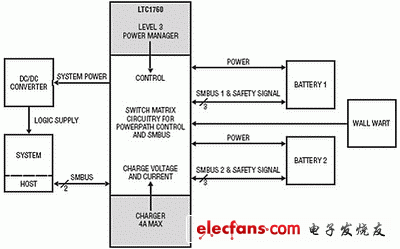
Figure 1 LTC1760 for dual battery system
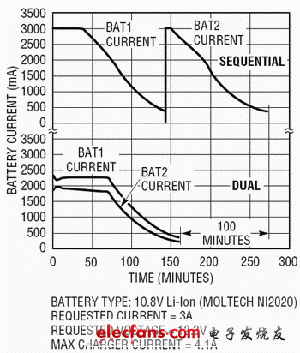
Figure 2 Comparison of battery charging time of dual battery
â— Main features of the LTC1760
1 Independent Level 3 charger polls the battery for charging requirements and monitors the actual current and voltage (with an error of ±0.2%) as determined by the internal battery charge measurement for fast, safe and thorough charging.
2 Fast charging mode can be used to further shorten the charging time.
3 Support battery inspection for barometer calibration.
4 3 power path FET diodes allow safe and low loss simultaneous discharge from DCIN and both cells.
5 Two FET diodes enable both batteries to discharge safely and with low loss.
6 Hardware programmable current and voltage safety limits and many other safety features to complement the battery's internal protection circuitry.

Although the LTC1760 is very precise, it is very easy to use. Only four key parameters need to be determined in any given design: input current limiting sense resistor RICL, current limiting resistor RILIM and matching charge current sense resistor RSENSE, voltage limiting resistor RVLIM, short circuit protection resistor RSC.
The LTC1760 adds some smart batteries and an AC adapter to form a simple system. The system structure is shown in Figure 3.
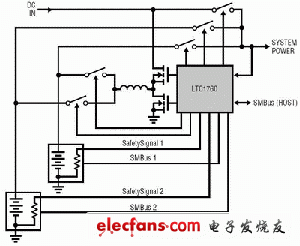
Figure 3 LTC1760 dual battery charger / selector system architecture
â— Input current limit detection resistor RCL
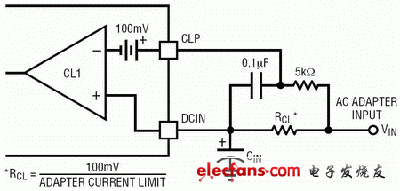
Figure 4 Input current limiting sense resistor circuit
As shown in Figure 4, this circuit limits the charging current to prevent overloading of the AC adapter when system power is increased. To set the input current limit, the most important thing is to minimize the rated current of the wall adapter. The current limiting resistor can be calculated by the following two equations.
ILIM=Adapter minimum current value - (Adapter minimum current value & TImes; 5%) (1)
RCL=100mV/ILIM(2)
However, the AC adapter can have a current limit of at least +10%, so it is often easy to set the adapter current limit to the actual adapter rating.
â— Current limiting resistor RILIM
The RILIM resistor has two functions. First, it tells the LTC1760's SMBus interface that the charger can supply the maximum allowable current of the battery, and any value that exceeds this limit will be replaced by a limit value. The second effect is to synchronize the full-scale current of the PWM charger with the full-scale current limit of the SMBus interface.
â— Voltage limiting resistor RVLIM
The external resistor value connected between the VLIM pin and GND can determine any of the five charger output voltage limit values ​​(see Table 3). This method of realizing the voltage-limiting value in hardware is a relatively safe measure that cannot be replaced by software.
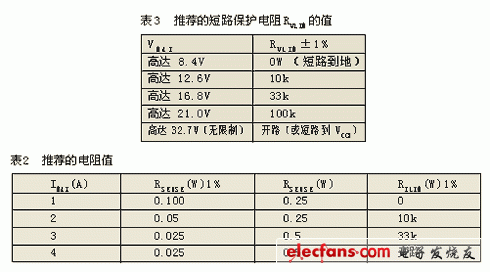
â— Short circuit protection resistor RSC
Each power supply path consists of two back-to-back PFETs in series with the short-circuit sense resistor RSC. The equivalent circuit of the battery power path (PowerPathTM) switch driver is shown in Figure 5.
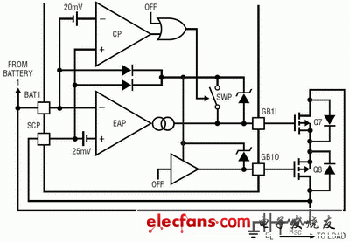
Figure 5 LTC1760 power path circuit
Short circuit protection
The function works in both current mode and voltage mode. If the output current exceeds the short-circuit comparator threshold for more than 15ms, then all power path PFET switches are turned off and the POWER_NOT_GOOD bit is set. Similarly, if the voltage drops below 3V for more than 15ms, then all power path switches will be disconnected and the POWER_NOT_GOOD bit will be set as well. Remove all power supplies to reset the POWER_NOT_GOOD bit. If the POWER_NOT_GOOD bit is set, charging is also disabled.
â— No software required
The LTC1760-based charger does not require software. Placing the integrated circuit in the initial hardware prototype will allow the system to charge and discharge the battery. However, in some cases, you can write some software so that the host can do the following.
1 Collect “charger status†information directly from the smart battery (ie as a barometer);
2 Support battery inspection.
in conclusion
The smart battery system offers advanced features with minimal design work. The LTC1760 is a very comprehensive single-chip dual-smart battery system that is easy to use and requires only four parameters to complete a complete design without the need for software code. The device requires minimal NRE operation to form a complete stand-alone battery charger system and operate normally.
modern led crystal Table Lamp, with stainless steel and Top K9 crystals materials and unique designs, they are very popular in modern style rooms. It use the led light source which is energy saving and eye protecting. Modern crystal table lamp has many unique style and apperance.Its function is to focus the light in a small area, easy to work and study. Decorative table lamp appearance of luxury, material and style and diverse, light structure is complex, for the decorative effect of space, decorative and lighting functions as important.


Modern Crystal Table Light,Table Lamp,Crystal Table Lamps,Modern Table Lamps
Zhongshan Laidi Lighting Co.,LTD , http://www.idealightgroup.com
